When Anne Boleyn was convicted of adultery and treason, five men were convicted with her. Her brother, George Boleyn, was one of those but do many people really know about the others? One of those was a close friend of the King, Sir Henry Norris. It must have been a shock for King Henry VIII to find out that such a close friend and servant was one of the guilty party and starts to make me wonder whether he knew much about Thomas Cromwell’s plot to remove the Boleyn faction from power.

Sir Henry Norris: Another Victim of a Plot to Remove Anne Boleyn
There were five men convicted of treason with Anne Boleyn. Sir Henry Norris was one of them but was he just another victim of Cromwell's plot?
The Early Life of Sir Henry Norris
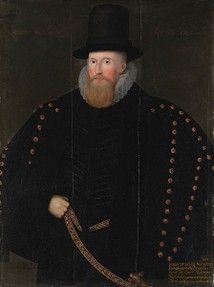 Very little is known about Sir Henry Norris’ earlier years. In fact, his father’s name is disputed by historians, with some saying it was Richard and others claiming it was Edward Norris. Using some deduction, it is unlikely that Richard Norris was Henry’s father. When Richard died in 1522, his daughter, Anne, inherited the estate. Since this was before the trial, had Henry been Richard’s son, it would have definitely been passed onto him.
Very little is known about Sir Henry Norris’ earlier years. In fact, his father’s name is disputed by historians, with some saying it was Richard and others claiming it was Edward Norris. Using some deduction, it is unlikely that Richard Norris was Henry’s father. When Richard died in 1522, his daughter, Anne, inherited the estate. Since this was before the trial, had Henry been Richard’s son, it would have definitely been passed onto him.
It is likely that Edward Norris was Henry’s father, which determines that Sir William Norris was Henry’s grandfather. William died in 1487 at the Battle of Stoke Field.
Henry Norris Moves Up the Power Ladder
Despite his ending, Henry had a great start in Court. He attended when he was very young and soon became the Gentleman of the Bedchamber. By 1515, he gained his first of office in Winkfield and was the bailiff of Ewelme by 1519. He continued to rise in power up to being made the Groom of the Stool in 1526. This would have instantly made him close to Henry VIII – as a friend and confidant. His close relationship makes it surprising that Henry Norris would be implicated in such a plot. Thomas Cromwell was risking a lot based on so little evidence.
At first, Henry was not close to the Boleyn faction and risked their wrath by offering his rooms for Cardinal Wolsey to stay in. As the Boleyns rose in power, Cardinal Wolsey lost favour with the King, which led to the removal of all the accommodation he owned. Henry was concerned for the health and well-being of Wolsey, which shows just how much of a caring man he was.
After the death of Wolsey, Henry did become close to the Boleyn family. This wasn’t just for more power. Historians believe that Henry genuinely liked Anne and George Boleyn. It was Henry’s influence that helped Anne Boleyn gain the political power that she had in her hay-day. This caused some problems with Thomas Cromwell, who wanted the political power that Anne was gaining. It is possible that Cromwell was so jealous of Henry Norris helping the Queen that he saw fit to have him removed too.
Henry was such good friends with the King of England that he was one of the few witnesses at the secret marriage between Henry VIII and Anne Boleyn.
Books Covering the Religious Reformation
Henry Norris the Religious Reformer
Like the Boleyn family, Henry Norris was also a religious reformer. This helped him to fit in with the family easily and he was a member of their faction by 1530. He enjoyed some of the same interests and luxuries and the soon-to-be Queen of England and her brother George.
It was also because of Henry’s position that George Constantine was allowed back in Court, with an English translation of the Holy Bible. This was a gift for Anne Boleyn and helped him gain instant favour for when she became Queen.
There is no doubt that Henry liked Anne but it is unlikely that there was anything more between them. Until 1530, Henry was married. After his wife’s death, his interests moved onto Mistress Margret Shelton – Anne Boleyn’s cousin through her father. This relationship didn’t go very far and Anne often teased him about it. There were words that were quoted as evidence for a relationship between Henry and the Queen, although they were taken out of context.
Anne made comments that Henry’s lack of commitment to Lady Shelton was because he wanted her. This one comment alone would have put both at high risk and could have been taken out of context as she was thinking ill of the King, which was treason in 16th century England. Anne knew the serious implications of the words after saying them and quickly begged Henry to speak to John Skip, her almoner, so swear that she was a good woman.
It was Henry’s actions that led to a suspicion of a relationship between the two. Skip informed Cromwell of the incident so that it could be used as evidence.
Surprisingly, the conversation wasn’t used as evidence in the end. Out of all the evidence given, this was one of the only pieces of factual evidence that could have been used. Cromwell opted for using dates that simply could not have happened – either when Anne was with the King, was pregnant or was recovering from a birth/miscarriage.
The Arrest of Sir Henry Norris
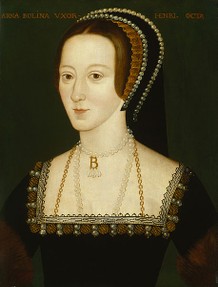 By the May Day joust, the first of the five men – Mark Smeaton – had been arrested. It is unclear about Henry VIII’s part in the plot but it is possible that he knew nothing about Henry Norris’ “guilt”. When Henry Norris’ horse become uncontrollable at the jousts, Henry VIII offered his own. There is a comment from Nicholas Sanders about how Anne dropped a handkerchief that Henry Norris retrieved. However, no other chronicler has written about this “event” and it is possible that it was another fabricated tale to help Cromwell.
By the May Day joust, the first of the five men – Mark Smeaton – had been arrested. It is unclear about Henry VIII’s part in the plot but it is possible that he knew nothing about Henry Norris’ “guilt”. When Henry Norris’ horse become uncontrollable at the jousts, Henry VIII offered his own. There is a comment from Nicholas Sanders about how Anne dropped a handkerchief that Henry Norris retrieved. However, no other chronicler has written about this “event” and it is possible that it was another fabricated tale to help Cromwell.
At some point during the day, Henry VIII received a message, possibly about Mark Smeaton’s “confession” and that Henry Norris was also guilty. On the way back, Constantine reports that Henry VIII was willing to offer a pardon to his friend as long as he told the truth. However, there is no detail about the accusations during that time. Whatever they were, Henry refused to admit to anything. It’s probably not the fact that Henry didn’t just the King but that he was genuinely innocent of the crimes he was being accused.
The Trial of Sir Henry Norris – A Man Already Condemned
Henry Norris did not have the fair trial that we have come to know of today. Since he was accused to treason, he would not have had a defence. He had no idea of the evidence against him and would have had no time to prepare. Henry would have had to find evidence to support his own claim that he was not guilty.
On top of that, the jury were all men who had a reason to find him guilty. Some of the men, like Thomas Cromwell, disliked Anne Boleyn and her faction while others owed money or wanted back in favour with the King.
Sir Henry Norris was found guilty and condemned to death. Henry VIII agreed to the execution of beheading by axe – not being hanged, drawn and quartered. He was executed on May 17, 1536 and said very little. As all the men on the day, he did not deny that he was guilty but he didn’t admit to the crimes either. It may have been that he was worried about a harsher execution at the last minute but it was also the norm in 16th century executions – the people being executed would admit to being sinners during their lifetime but not necessarily of committing the crime.
Henry’s body was buried in an unmarked grave but his head was taken by his family – a family that must have believed he was innocent. His head was buried by his family at a private chapel.
Books About the Downfall of Anne Boleyn
 |  |  |
| The Final Year of Anne Boleyn | The Fall of Anne Boleyn: A Countdown | Great Tales from British History The ... Only $3.12 |
You might also like
England Under the Tudors: Would King Edward VI Have Been a Goo...Edward VI reigned between 1547 and 1553 when he was just a boy. It's hard to ...
Lady Jane Boleyn: Vindictive Woman or Pawn in a Plot?Jane Boleyn is known for her part in bringing down the Boleyn faction. How mu...
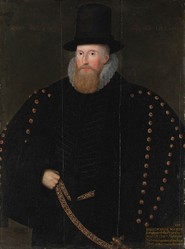







 Alternate History: What If Mary I Had a Child?on 01/26/2015
Alternate History: What If Mary I Had a Child?on 01/26/2015
 Francis II of France Dies: Mary, Queen of Scots Returns Homeon 12/05/2014
Francis II of France Dies: Mary, Queen of Scots Returns Homeon 12/05/2014
 Does Writedge Pay? Payment Proofon 12/03/2014
Does Writedge Pay? Payment Proofon 12/03/2014
 Alternate History: What If Lady Jane Grey Was Not Deposed?on 11/11/2014
Alternate History: What If Lady Jane Grey Was Not Deposed?on 11/11/2014

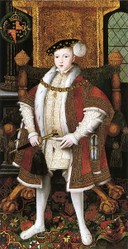
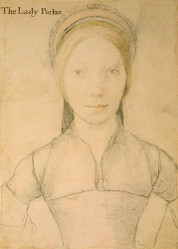
Comments